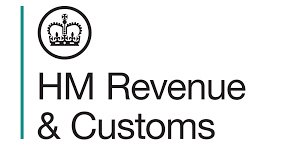HMRC SDLT: Guide on Calculating Stamp Duty Land Tax for Lease Premiums
Calculation of Stamp Duty Land Tax: Lease Premium
This section provides guidance on calculating Stamp Duty Land Tax (SDLT) for lease premiums. It explains the principles and concepts involved in determining the tax liability when a lease premium is paid. The content is designed to help taxpayers understand their obligations and ensure compliance with SDLT regulations.
- Guidance on SDLT calculation for lease premiums
- Explanation of principles and concepts
- Ensures compliance with SDLT regulations
“`

Read the original guidance here:
HMRC SDLT: Guide on Calculating Stamp Duty Land Tax for Lease Premiums
Understanding the Calculation of Stamp Duty Land Tax for Lease Premiums
When you lease a property, there might be an upfront payment called a lease premium. It is essential to know how this payment is taxed under Stamp Duty Land Tax (SDLT) regulations. This article explains how to calculate the SDLT on lease premiums, the factors involved, and how to ensure compliance with the regulations set by HMRC.
What is a Lease Premium?
A lease premium is a one-time payment made by a tenant to a landlord when entering into a lease agreement. This payment is separate from the annual rent and can be a substantial amount, especially for long-term leases. The lease premium is often negotiated and can be influenced by various factors, such as the location of the property or its rental value.
When is SDLT Charged on a Lease Premium?
SDLT applies when a lease premium is paid. If you are entering into a lease agreement and you pay a lease premium, you should be aware of the SDLT implications. Here are the key points to remember:
- SDLT is charged on the total value of the lease premium.
- The standard rules for calculating SDLT apply to lease premiums, just as they do for other property transactions.
- You must notify HMRC and pay the appropriate SDLT within a specific time frame after the transaction.
How to Calculate SDLT on Lease Premiums
To calculate the SDLT on a lease premium, follow these steps:
- Determine the value of the lease premium: This is the amount paid upfront when the lease is granted.
- Identify the correct SDLT rate: The SDLT rates can change periodically, so ensure you reference the latest rates on the HMRC website. Typically, there are different rates for residential and non-residential properties.
- Use the standard calculation: Apply the SDLT rates to the lease premium amount to find out how much tax you owe.
SDLT Rates for Lease Premiums
SDLT rates differ depending on whether the property is residential or non-residential. Here’s a simplified breakdown of the typical rates:
- Residential Properties:
- Up to £125,000: 0%
- From £125,001 to £250,000: 2%
- From £250,001 to £925,000: 5%
- From £925,001 to £1.5 million: 10%
- Above £1.5 million: 12%
- Non-Residential Properties:
- Up to £150,000: 0%
- From £150,001 to £250,000: 2%
- Above £250,000: 5%
It is important to check HMRC’s current guidelines for any changes to these rates.
Example of SDLT Calculation on a Lease Premium
Let’s say you are leasing a commercial property for £500,000 as a lease premium. You need to calculate the SDLT as follows:
- The premium is £500,000.
- As a non-residential property, it falls into the SDLT rate structure for non-residential properties.
- SDLT is charged:
- 0% on the first £150,000: £0
- 2% on the next £100,000 (£150,001 to £250,000): £2,000
- 5% on the remaining amount (£250,001 to £500,000):
- £250,000 x 5% = £12,500
So, the total SDLT due on a £500,000 lease premium would be:
£0 + £2,000 + £12,500 = £14,500
Paying SDLT on a Lease Premium
Once you have calculated the SDLT amount, you must submit your payment to HMRC. Here are the key steps:
- Complete the SDLT return: You must fill out an SDLT return form. This can usually be done online through HMRC’s services.
- Pay the SDLT: Payment must be made electronically through a bank transfer or other acceptable methods to HMRC.
- File within the deadline: Generally, you must file your return and pay the SDLT within 14 days of the completion of the lease.
Exemptions and Reliefs
In certain cases, you may not have to pay SDLT, or you might qualify for relief. Here are some examples:
- Consideration payment: If the total monetary value for the lease premium is below the SDLT threshold, you won’t be required to pay tax.
- Charities: Charities may receive relief from SDLT under specific conditions.
Common Mistakes to Avoid
When dealing with SDLT and lease premiums, it’s important to avoid common pitfalls:
- Missing the deadline: Always file your SDLT return and payment on time to avoid penalties.
- Not calculating correctly: Double-check your calculations to ensure you’re not underpaying or overpaying SDLT.
- Incorrect classification: Ensure the property type (residential vs non-residential) is correctly identified, as different rates apply.
Final Notes on SDLT for Lease Premiums
Understanding the SDLT rules regarding lease premiums is essential for anyone entering into a lease agreement. Familiarising yourself with the rates, calculation methods, and obligations will help avoid any issues with HMRC.
For more detailed information and updates, always refer to the official resources on the HMRC website and consult with a tax professional if needed.
For specific queries about your situation, consulting professional advice is highly recommended to ensure compliance and accuracy.
If you would like to see the official document for further details, please follow this link: SDLTM0000.
Next section: SDLTM13010 – Lease premium







